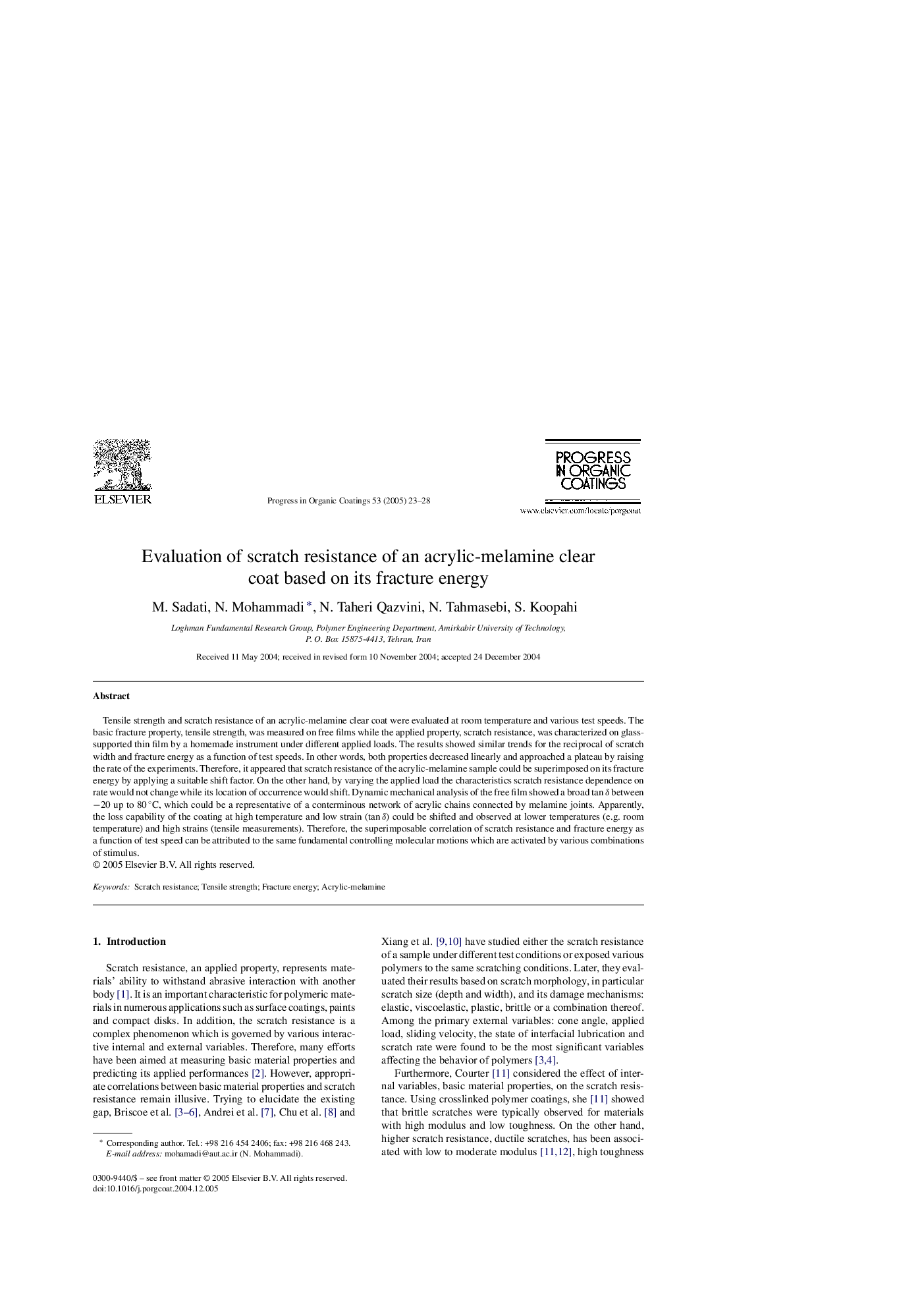| Article ID | Journal | Published Year | Pages | File Type |
|---|---|---|---|---|
| 10398216 | Progress in Organic Coatings | 2005 | 6 Pages |
Abstract
Tensile strength and scratch resistance of an acrylic-melamine clear coat were evaluated at room temperature and various test speeds. The basic fracture property, tensile strength, was measured on free films while the applied property, scratch resistance, was characterized on glass-supported thin film by a homemade instrument under different applied loads. The results showed similar trends for the reciprocal of scratch width and fracture energy as a function of test speeds. In other words, both properties decreased linearly and approached a plateau by raising the rate of the experiments. Therefore, it appeared that scratch resistance of the acrylic-melamine sample could be superimposed on its fracture energy by applying a suitable shift factor. On the other hand, by varying the applied load the characteristics scratch resistance dependence on rate would not change while its location of occurrence would shift. Dynamic mechanical analysis of the free film showed a broad tan δ between â20 up to 80 °C, which could be a representative of a conterminous network of acrylic chains connected by melamine joints. Apparently, the loss capability of the coating at high temperature and low strain (tan δ) could be shifted and observed at lower temperatures (e.g. room temperature) and high strains (tensile measurements). Therefore, the superimposable correlation of scratch resistance and fracture energy as a function of test speed can be attributed to the same fundamental controlling molecular motions which are activated by various combinations of stimulus.
Related Topics
Physical Sciences and Engineering
Chemical Engineering
Process Chemistry and Technology
Authors
M. Sadati, N. Mohammadi, N. Taheri Qazvini, N. Tahmasebi, S. Koopahi,
